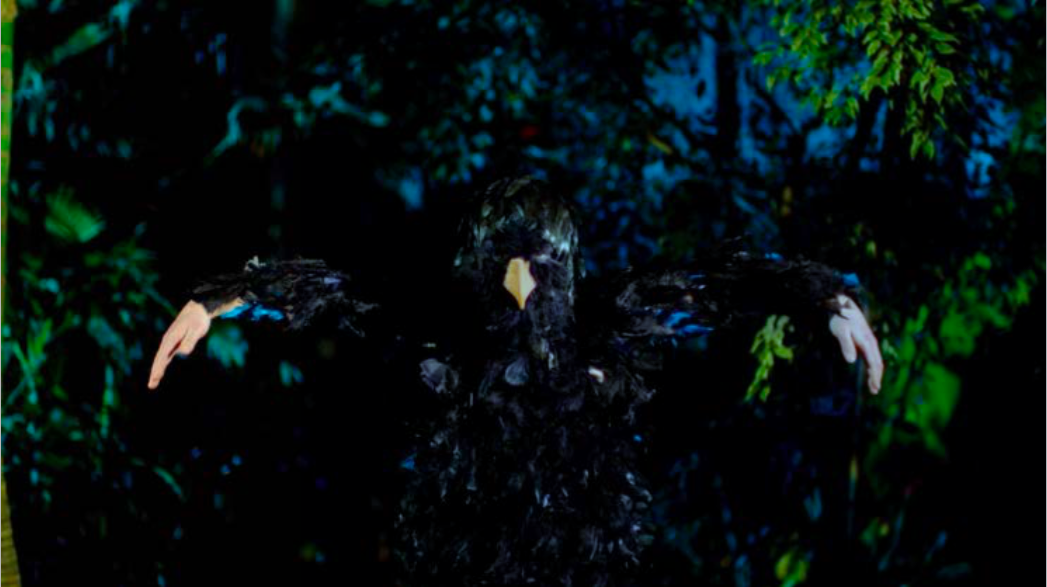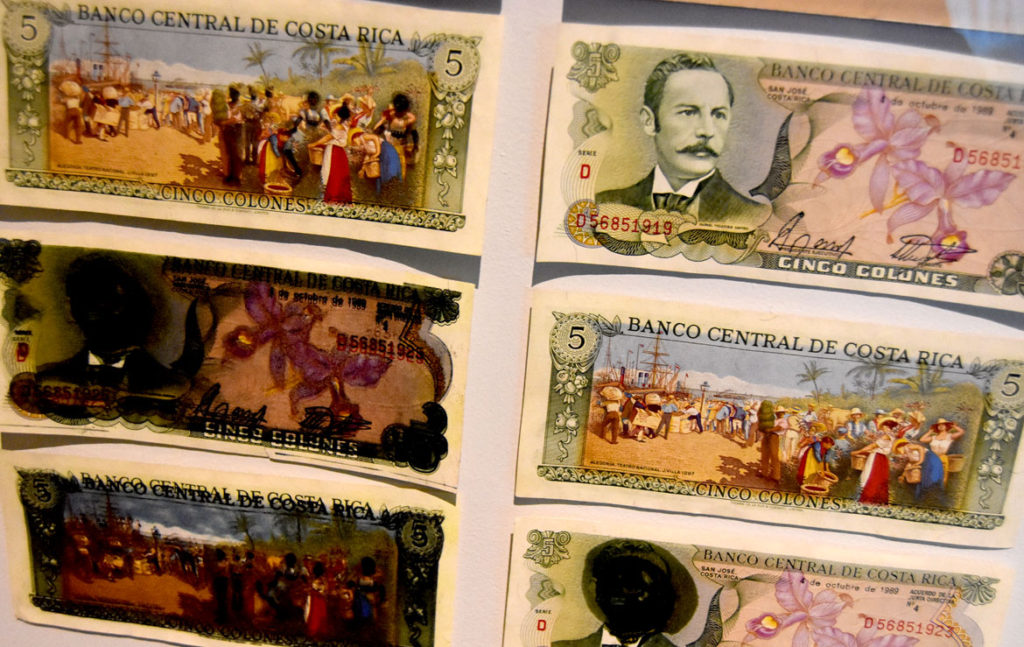Laura Huertas Millán’s 2011 video “Journey to a land otherwise known” is all closeups of green leaves and orchid blossoms and then a man, his face painted in green camouflage. You hear sounds of water, birds, frogs.
“I encountered new plants, new animals, new men,” a voice says (in subtitled translation). “They walk about absolutely naked and do not hide their private parts.”
The video was actually recorded in a greenhouse in France, tropical plants taken from their native lands and artificially kept alive in a simulacra of home.

It seems like a good entry point to the exhibition “A Decolonial Atlas: Strategies in Contemporary Art of the Americas” at Tufts University Art Gallery in Medford through April 15. It’s a show of “artists from the United States and Latin America who grapple with continued questions of colonialism and postcolonialism.”
Huertas Millán “is using real historic archival writings,” texts from French, Dutch and Spanish explorers, says Pilar Tompkins Rivas, the director of the Vincent Price Art Museum in Los Angeles, who organized the exhibition. “There’s a rupture, there’s a very beginning of a misunderstanding, a misconception of the Americas. They might write back that they’re half-bird, half-human. They’re fantastical beasts. They get us the idea that the native peoples were savages and that set up the idea that it’s okay to be anniliahted.”

Help WONDERLAND keep producing our great coverage of local arts, cultures and activism by contributing to Wonderland on Patreon. And sign up for our free, weekly newsletter so that you don’t miss any of our reporting.
“Decolonial Atlas” offers an impressionistic video by Javier Tapia and Camilo Ontiveros that shows correspondences between communities in Los Angeles and across the Americas. “You see these people and you see the same faces,” Tompkins Rivas says. “The address is different, but the face is similar. What is the continuity across time and across place?”
Isabel Avila shows photos of Pawnees playing basketball in 2006. “We are reminded that native people are not part of the historic past. They’re part of the historic present. And they’re not static,” Tompkins Rivas says.
Jeffrey Gibson draws on his Cherokee and Choctaw heritage as well as references to George Michael’s 1990 hit “Freedom” in his 2016 beadwork reading “I Don’t Belong To You, You Don’t Belong To Me.”
Carlos Motta queers the history with the story of male geographer and explorer writing a romantic letter to a soldier.
Marton Robinson “responds to the invisibility of black bodies within the history of national formation in the Americas” by altering the Cinco Colones money of his native Costa Rica. A sign explains that the bills are illustrated with a painting by an Italian artist at the National Theatre that depicts white, European peasants laboring at the coast.
“They painted everyone in the style of Italian peasants,” Tompkins Rivas says. “But of course it was black Caribbean labor. So the artist goes in and replaces the faces.”

“Decolonial Atlas” is an exhibition about repression and invisibility amidst the pervasive racism of the Americas. Story after story tells of interlopers treating people and nature as resources to be conquered and extracted, things to be captured and sold and profited from.
“Extractivism being a neo-colonial, neo-liberal policy as it pertains to Latin America primarily, you’re extracting resources—gold or lumber or people. That was the way things were set up,” Tompkins Rivas explains. “It’s hard for us to imagine because there are places that were already taken from the indigenous people that live there historically. So we take it for granted.”
But of course, Tompkins Rivas says, “Those kinds of things continue today.” A video by Eamon Ore-Giron documents how, Tompkins Rivas says, “a Chinese company bought the top of a mountain [in Peru] and displaced all of the people there to turn it into an open pit copper mine.”
The exhibition is about reorientation and respect. It’s about asserting and reclaiming. It’s about how to live in this colonial fait-accompli now—even as the colonial forces continue on.
“I’m just thinking about these legacies and the overlaying of different eras of European colonialism,” Tompkins Rivas says. “I’m hoping to just draw attention to artists who are asking questions and thinking about how do these things still persist and are tied to forces that have been going on for five centuries in this hemisphere.”

Brazilian-born artist Paulo Nazareth traveled to Ouidah, Benin, to record his 2013 video “L’Abre D’Oublier (The Tree of Forgetting).”
“The artist had gone to western Africa and gone to a site that was one of the hubs of the slave trade going to Brazil,” Tompkins Rivas says. “He wanted to go back to a continent of origin that is part of the heritage of so many people.”
The story is that enslaved people “were marched around the tree as a symbolic act to forget the homeland they were about to depart,” a sign explains.
“They walked them seven times around the tree,” Tompkins Rivas says. “They’d say, ‘Now forget everything you know.’ Because from there they were marched to the slave ships.”
In Nazareth’s performance, he walks backward around the tree, again and again, a ritual reversing, a ritual undoing, a ritual recalling. Tompkins Rivas says, “It’s a kind of unwinding of hundreds of years of Atlantic slave trade.”

